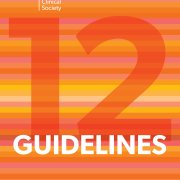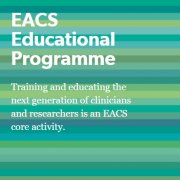From version 8.0 to 8.1
ANTIRETROVIRAL TREATMENT SECTION
- When to start ART: Any reference to threshold of CD4 count was deleted. EACS now recommends starting ART in all adults with chronic HIV infection, irrespective of CD4 count. We, however, highlight that the lower the CD4 count is, the greater the urgency is to start ART immediately.
- What to start with: Combinations with TAF was added as an alternative to TDF, where available, especially in elderly or in individuals with/at increased risk of osteoporosis or renal impairment. Cobicistat as pharmacologic booster for darunavir and atazanavir was also added as an alternative to ritonavir.
- Switch strategies: Unboosted PIs, PI/r or /c +MVC, ATV/r or /c + RAL was added to combinations not recommended for switch.
- ARV in pregnancy: EVG/c and RPV was added as probably safe alternative for ART during pregnancy.
- ART and TB treatment: The indications for use of cobicistat and TAF with tuberculostatic drugs were added. Contraindications of cobicistat with rifampicin were added with recommendations to be used with half-standard dose of rifabutin. Likewise it was added that TAF should be used with caution because of lack of pharmacokinetic data.
- Post-Exposure Prophylaxis (PEP): For sexual contact with HIV-positive individuals on ART, EACS advised that PEP should be started until the result of the source’s viral load is available. EACS does not recommend TAF-containing regimens for PEP because of lack of clinical experience in this field.
- Pre-Exposure Prophylaxis (PrEP): TAF-containing regimens are not recommended for PrEP because of lack of clinical experience in this field. Use of generic formulations of TDF/FTC may be encouraged in some countries where access to PrEP is not widespread.
CO-MORBIDITIES SECTION
- A new general introduction to the EACS Guidelines was included.
- TAF was added to all tables on adverse drug effects, drug-drug interactions, dose adjustment in liver and renal insufficiency and swallowing difficulties. A note was included that TAF may have a lower risk of tenofovir-related kidney and bone adverse effects but long-term experience is lacking.
- A new drug-drug interaction table on Anticoagulants/Antiplatelet agents and ARVs was added.
- A clarification on older drugs with current limited use was added.
- Screening for HCC was specified to include persons with cirrhosis and persons with HBV co-infection at high HCC risk (persons of Asian and black ethnicity, family history of HCC, liver cirrhosis, NAFLD or replicating HBV infection).
- A consideration of screening for cryptococcus antigen in serum in persons with CD4 count < 100 cells/μL at time of HIV-diagnosis was added.
- A specification on risk groups for bone density screening was added.
- For more details on vaccination recommendations in HIV-positive persons a link and cross-reference to the BHIVA guidelines was added.
CO-INFECTIONS SECTION
- HBV part:
TAF was included as an alternative to TDF in HBV/HIV co-infected persons with bone mineral density changes or chronic kidney disease.
- HCV part:
- Text and table were updated following the licensing of SOF/VEL and EBR/GZR.
- Amendments were made regarding the use of SOF+SMP, SOF/LDV and SOF+DCV.
- SOF+RBV in GT 2 or 3 were removed as well as SOF+PR in GT 3.
- The DDA/ARV drug-drug interaction table was subsequently updated.
- The wording regarding management of acute HCV has been updated in the light of first results from studies assessing IFN-free DAA regimen in acute HCV.
- New panel member: Juan Berenguer (replacing Cristina Tural).
OPPORTUNISTIC INFECTIONS SECTION
- The recommendation to stop secondary prophylaxes only when viral suppression is achieved was generally added.
- A more general phrasing of the possibility of adding caspofungine to the PCP treatment in cases not adequately responding to standard treatment.
- A comment was added on the contraindication of using corticosteroids in the treatment of cryptococcal meningitis.
- A treatment option of voriconazole, posaconazole and caspofungine for candidiasis in cases of candida drug resistance was added.
- EACS now recommends to consider using an INSTI as part of ART in individuals with PML to achieve immune reconstitution as quick as possible.
- The regime of rifapentine 900mg 1x/week and isoniazid 900mg 1x/week was added to the treatment options for latent tuberculosis.


20th European AIDS Conference
15-18 October 2025 Paris, France

EACS Guidelines updated
The EACS 12.0 and the app are available for free on

Educational Programme
Training and educating the next generation of clinicians and researchers is an EACS core activity.

EACS Resource Library
Access all scientific content of EACS core activities! (members only)